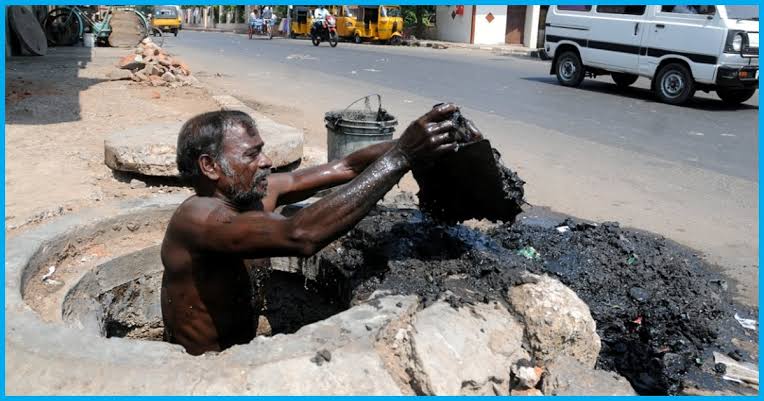As many as 282 sanitation workers have died while cleaning sewers and septic tanks in the country between 2016 and November 2019.
The Union Ministry of Social Justice and Empowerment (MSJE), in a reply to a question by NCP’s Rajya Sabha MP Vandana Chavan, revealed that 282 sanitation workers have died while cleaning sewers and septic tanks in the country between 2016 and November 2019.
The highest number of deaths, 40 was recorded in Tamil Nadu followed by Haryana, which recorded 31 deaths in manholes. Delhi and Gujarat recorded 30 deaths each followed by Maharashtra and Uttar Pradesh, each recording 27 deaths.
While the year 2016 accounted for 50 deaths, 83 sanitation workers died due to suffocation in septic tanks and sewers in 2017 and 66 deaths were recorded in 2018. Till November 2019, the death count reported from across the country stood at 83.
These figures, the ministry maintained, were based on the number of FIRs filed by the police in the respective states.
The MSCDL Act defines manual scavenger as “a person engaged in or employed for manually carrying human excreta.” Manual scavenging may not be prevalent in the same form today. It has only worsened. Sanitation workers have to now risk their lives by physically entering the septic tanks and sewers that have not been deludged for years together to clean them manually – mostly without even the basic safety gear.
Sadly, such laxity is also evident in the implementation of the Manual Scavengers Act, which clearly states that no person, local authority or any agency shall engage or employ, either directly or indirectly, any person for hazardous cleaning of a sewer or a septic tank.
Section 9 of the said Act explicitly makes even the first instance of contravention of this statute punishable with imprisonment up to two years or fine up to INR two lakh or both.
Despite such stringent provisions, not a single FIR was filed under the provisions of this Act in 2014. Two cases under the law were reported from Karnataka in the NCRB report of 2015, where only one went for trial. Karnataka has maintained its solo lead in its compliance with the law, by filing 55 FIRs as announced by the MSJE in the Lok Sabha in March 2018.
Such lack of seriousness regarding one of the most disturbing realities of the country is also highlighted in the government’s own survey of manual scavengers. For example, nearly 600,000 manual scavengers were identified in a survey conducted in 1992. This number shot up to nearly 800,000 in the revised survey figures announced by the MSJE in 2002-03.
The numbers suddenly dropped to just 13,639 in 2013. Therefore, it sounds implausible that, despite the many positive steps taken under the Swachh Bharat Mission, this figure more than tripled to 42,303, according to a national survey carried out in 2018 covering 170 districts and 18 states.
Karnataka stands sixth with 1,754 manual scavengers after Uttar Pradesh (19,712), Maharashtra (7,378), Uttarakhand (6,033) Rajasthan (2,590) and Andhra Pradesh (1,982). But even this figure seems highly inaccurate, as the 2018 survey, for reasons best known to the MSJE, was carried out only in areas where “there are reasons to believe the existence of manual scavengers.”
Leave a comment
Your email address will not be published. Required fields are marked *


